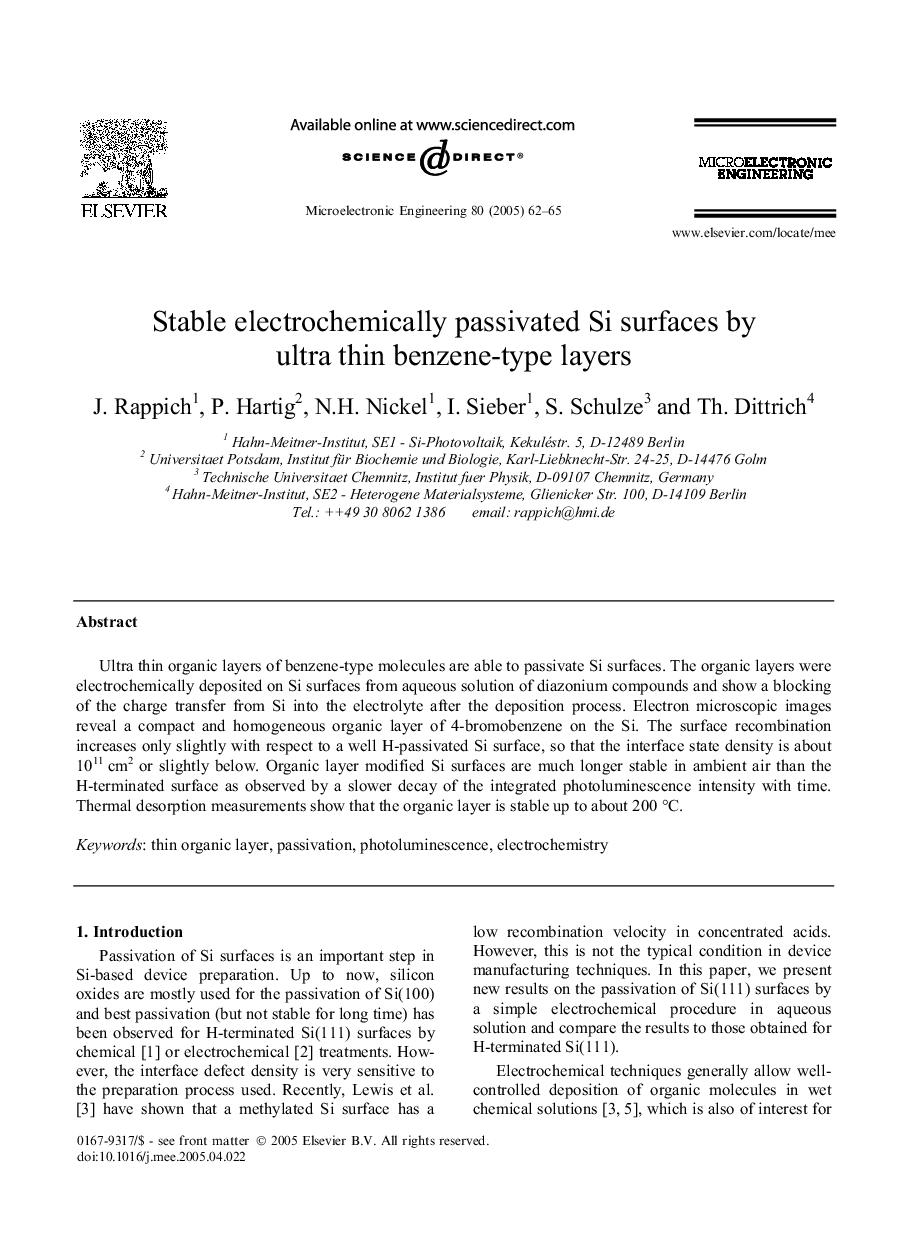| Article ID | Journal | Published Year | Pages | File Type |
|---|---|---|---|---|
| 9670461 | Microelectronic Engineering | 2005 | 4 Pages |
Abstract
Ultra thin organic layers of benzene-type molecules are able to passivate Si surfaces. The organic layers were electrochemically deposited on Si surfaces from aqueous solution of diazonium compounds and show a blocking of the charge transfer from Si into the electrolyte after the deposition process. Electron microscopic images reveal a compact and homogeneous organic layer of 4-bromobenzene on the Si. The surface recombination increases only slightly with respect to a well H-passivated Si surface, so that the interface state density is about 1011 cm2 or slightly below. Organic layer modified Si surfaces are much longer stable in ambient air than the H-terminated surface as observed by a slower decay of the integrated photoluminescence intensity with time. Thermal desorption measurements show that the organic layer is stable up to about 200 °C.
Related Topics
Physical Sciences and Engineering
Computer Science
Hardware and Architecture
Authors
J. Rappich, P. Hartig, N.H. Nickel, I. Sieber, S. Schulze, Th. Dittrich,
